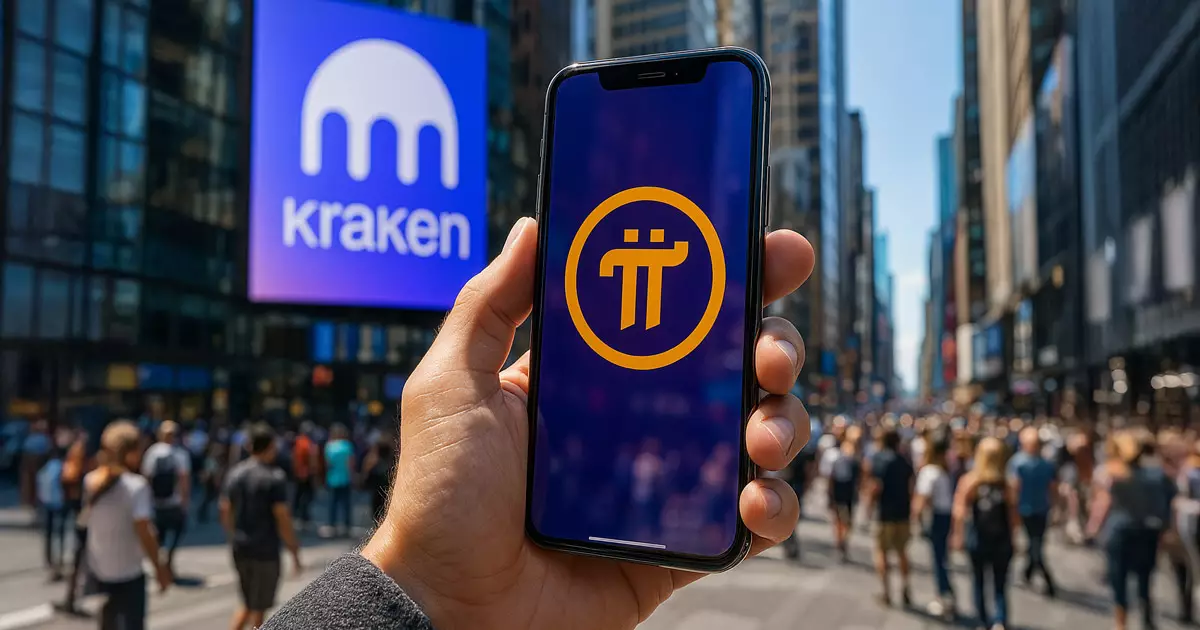Kraken’s recent introduction of perpetual futures contracts for the Pi Network’s native token, PI, was heralded as a significant milestone. Leverage of up to 20x sounds enticing, but behind this enticing facade lies a tempest of uncertainty. On the announcement date, May 23, traders anticipated a boom, yet the token languished at $0.77, dipping 5.33% in just 24 hours. This raises a critical question: Who, other than speculative traders and hedge funds, actually benefits from such leveraged products? The broad spectrum of retail investors, who often grapple with the complexities of derivatives, might find themselves ill-equipped to navigate this turbulent landscape.
The Dangers of Excessive Leverage
While the ability to capitalize on both upward and downward price movements sounds like a magician’s bargain, it could instead serve to deepen the woes of the Pi Network. Leveraged trading magnifies not just gains but losses, making it a double-edged sword. With liquidity potentially increasing, so too could volatility — and the risk of liquidation pressures on both long and short positions. The recent dip in price, following a fleeting rally earlier in May that saw PI surge above $1.50, exemplifies the precarious nature of this asset. Some may cheer this as growing institutional interest, but the roulette-style nature of futures contracts poses risks that can whet the appetite of not just investors, but also opportunistic market manipulators.
The Elephant in the Room: Centralization Concerns
Moreover, the token’s distribution remains a glaring concern. A whopping 60% of PI tokens are controlled by the core team, raising ethical and operational questions about decentralization. This heavy concentration of power can lead to decision-making processes that may not necessarily align with the interests of the community. In addition, the high concentration of validator nodes in Vietnam poses its own set of challenges, especially as impending regulatory frameworks threaten to further constrain the network. If the decentralized ethos is compromised, the entire structure of the Pi Network could face challenges that go far beyond mere price fluctuations.
Bull Trap or Golden Opportunity?
Despite its listing on Kraken serving as a beacon for increased visibility, it’s crucial to scrutinize this through a critical lens. One can’t help but fear that the current speculative environment may transform into a breeding ground for short-selling tactics. With bearish sentiment potentially rising, the allure of leveraging futures could well morph into traps, causing undue pressure on the token’s already vulnerable price. Traders looking for collectible profits might instead find themselves ensnared in a cycle of volatility that is more harmful than helpful.
Trust Issues and Future Viability
As institutional interest may yes, be burgeoning, the overarching issues within the Pi Network, including inadequate presence on significant spot exchanges like Coinbase and Binance, cannot be overlooked. Without solid foundations of trust and a proven model for decentralized governance, the future wellness of PI remains suspect at best. The Kraken listing may have been a calculated move intended to inject life into the project, but without addressing the core issues of governance and centralization, it risks becoming a transactional vessel that fosters more despair than hope in the complex realm of cryptocurrency trading.

